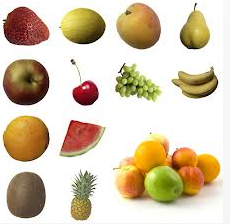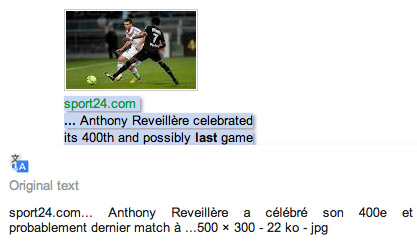
 In most grammar classes and textbooks, you learn words in groups. You might learn about animals on one day and fruits the next. This is comfortable, both for language teachers and students. Your teacher gets to have a clear lesson plan (today is about numbers), and you get to accomplish something (today, I learned the numbers!).
In most grammar classes and textbooks, you learn words in groups. You might learn about animals on one day and fruits the next. This is comfortable, both for language teachers and students. Your teacher gets to have a clear lesson plan (today is about numbers), and you get to accomplish something (today, I learned the numbers!).
But is this the most efficient way to learn vocabulary?
If you look at the research on vocabulary acquisition, you’ll find a surprising result: weirdly enough, learning groups of similar words (apple, pear, banana) is significantly harder to learn. You’ll be much better off if you either learn words in unrelated groups (apple, dog, red) or in groups that form stories (apple, sweet, to eat).
Interference
The research on this topic revolves around the concept of interference. Here’s the idea:
Suppose you learn a bunch of fruit names: une pomme (apple), une poire (pear), une pêche (peach), etc. A few days later, you try to recall one of those words.
Upon seeing the picture, your brain jumps into action, looking for your word through several possible routes. It’s a fruit! It’s a French word I learned a few days ago! It starts with a P!
And because you happened to learn three French fruits that start with the letter P (and all on the same day), you’re kind of screwed. Memories compete. When you try to recall your word, your three French fruits get into a kind of mental tug-of-war, while you try to figure out which one seems the most apple-like. As a result, you’ll have a harder time remembering pomme, and even if you do remember, you’ll take much longer to find it.
That’s not even the end of the story. While you’re having this mental fight, you’ve probably just made the situation a little worse for next time. Every time you think of two things at once, they interconnect. So if you’re busy thinking about pommes, poires and pêches, and you’re not particularly sure which one’s which, then you’re drawing those three fruits together into a jumbled group of “Fairly confusing French fruits that start with the letter P.” You’ll be more likely to remember all three fruits the next time you try to retrieve the word for pear or peach.
I’ve run into this problem quite a bit on my own, especially in French, where I learned a lot of similar words at the same time. I still have problems remembering wither sept is 6 or 7, or whether jaune is yellow or green.
The defense against interference is to make similar words as different as possible. And since you can’t go into the French language and change pomme and poire so that they don’t start with the same letters, your only real ability to do this involves learning these words at different times.
The Research
The concept of interference has been researched in a lot of different contexts, and I’ve linked five related studies at the end of this article, if you’d like to read more.
One of the first studies (Waring 1997) gave test subjects a group of 3-6 words and their “translations” into a fake foreign language (apple = tisahl, pear = nugaw, etc.), and recorded how long it took each subject to memorize the translations. Half of the subjects got a group of closely related words (jacket, shirt, sweater), and half got unrelated words (frog, car, rain). The researchers would quiz subjects (what’s the word for “jacket”?) until they could remember every new translation within 3 seconds (‘jacket’ is……iddek!), and recorded the number of times they needed to repeat the tests until a subject successfully memorized a word. These are their results:

Similar words took more than 35% longer to learn, at 11.3 repetitions for a group of similar words, compared to 7.2 repetitions for a group of unrelated words. This isn’t particularly efficient.
Still, time isn’t everything. What about retention? Once you memorize a group of similar or unrelated words, how well do they stick?
In a 2008 study, researchers tested these ideas in a school, teaching Turkish kids 40 unrelated English words (peg, key, rat, sun) and 40 related words (20 foods and 20 animals) in a classroom setting, and testing them afterwards on how well they could match English words and pictures. They tested them immediately after each lesson and again 1 week later. In both cases, the kids had a harder time remembering similar words:

And they took longer to finish every similar-word quiz, taking an average of 5.8 minutes to finish, compared to 4.9 minutes for unrelated-word quizzes.
Other ways to learn words
When you go by the numbers, learning similar words at the same time is a fairly crappy idea, even if it feels a bit more comfortable. So what are the alternatives?
In most studies, the alternative to word groups involved learning a jumble of totally unrelated words, and that works quite well. If you’ve perused through this site, you’ve probably run across my Base Vocabulary List for Any Language, which is currently arranged in typical word groups (animals, professions, etc.)
Based upon the research, I started playing around with the idea of an alphabetical list. Normally, an alphabetical list would solve the similar word problem at the expense of adding a new problem: the words would all sound similar. But if you start with an alphabetical list in English and then translate it into your target language, you basically create a randomly ordered list anyways. So I put my English word list in alphabetical order, translated it into Hungarian, and learned that list. In practice, I found that memorizing words was much easier. I stopped getting my greens confused with my yellows (although I still get six confused with seven; I didn’t follow my own advice when it came to numbers, and Hungarian’s six and seven – hat and hét – are extremely similar looking).
Alphabetical lists are also a lot easier to use; I could just skim through my Lonely Planet Phrasebook, circle my A-words, then circle my B-words, and after 30 minutes, I had good translations for every word in my list. So in the near future (probably next week), I’ll release a new version of that list (with an extra couple hundred words) in alphabetical order, so that it’s easier to use and easier to memorize.
But alphabetical and random orders aren’t the only options. In one of the earliest studies, researchers tried out groups of words that shared the same theme. These are words that tell a story – sweater, changing room, try on, cash register, wool, navy blue, striped – rather than words that fit in the same category, like sweater, shirt, jacket, and coat. They’re related words, rather than similar words, and there’s a huge difference between them.
Learning related words – words that form stories – worked even better than totally random words, although the effect was relatively mild. Subjects needed ~10% fewer repetitions to learn a group of words like “frog, hop, slimy, pond, croak, and green,” compared with “cloud, erase, social, office, lose, and risky“:

Maybe in the future, I can create a frequency list that’s arranged in little story-like clusters. That’d be pretty neat to have, although it would need to be professionally translated first, since it’s kind of a pain in the butt to translate a list that isn’t in alphabetical order. I’ll probably get around to that eventually, but there’s a way you can give yourself that 10% boost in memorization speed right now: by learning chains of words through Google Images.
Chaining words together to make them easier to learn
I’ve talked about learning words through Google Images a few times so far. The basic idea is that you search for a word like “dernier” (last) and get results like these:

Google Image search for “dernier” (with Chrome’s auto-translate)
Then you use the French sentence and the picture to learn your word. Dernier is the word that fits into “Anthony Reveillère a célébré son 400e et probablement __ match.”
But suppose you didn’t know the word “célébré” or “probablement.” You could use this sentence to learn those words, too. Or you could look up a new story for one of those words, creating a chain of connected stories:

You might then learn “saison” or “neuvième,” either by re-using this story or by adding yet another a new story to your chain.
Through this process, you can learn a long string of related words in the context of interconnected stories. They’ll be faster to memorize and easier to retain than totally unrelated words, and they’ll be much better than a list of similar words like apple, pear and apricot. I like to use a frequency list to guide my general vocabulary studies, and then whenever I encounter a particularly interesting word, I’ll create a little chain of words and stories. In the process, I learn a lot more vocabulary, get a lot more exposure to a bunch of sentences, and have an easier time remembering all of it.
If you’d like to read more on the topic of interference and vocabulary acquisition, check out these articles. Their introduction sections are often pretty readable:
- Effects on vocabulary acquisition of presenting new words in semantic sets versus semantically unrelated sets (2008)
- Vocabulary acquisition from extensive reading: A case study (2006)
- Semantic category effects in second language word learning (2003)
- The negative effects of learning words in semantic sets: A replication (1997)
- The effects of semantic and thematic clustering on the learning of second language vocabulary (1997)
That’s it! If you have questions or suggestions, post in the comments section below. If you’d like to get email notification whenever there’s a new post, subscribe to site updates! [wysija_form id="1"]

nice article.
It’s even worse for stuff that comes in tables. pronouns, declensions, articles.
And if you start ordering alphabetically, you need to be aware of pairs like teriffic/terrible, appalling/appealing. I’m fairly confident google translate has some fun with those :p.
A nice article and an interesting research. But I don’t agree that much with the conclusions.
I think introducing new vocab thematically is a great thing. But the best way to learn, for many people, is to put it into an SRS or making paper cards or lists of words that don’t stick etc. which basically leads to restructuring the order of the words and creating new and temporary groups. These two do not exclude each other, being introduced to a thematic list is not automatically the same thing as learning the vocabulary.
I tried alphabetical lists and they caused me much more confusion than anything else I have ever tried.
That story thing is a good one but I can’t see much of a difference between having a “list that includes a story” and having a larger thematic list including all the subcathegories. Therefore, isn’t the core of the them-voc lists’ trouble the fact that they are too small and their topic too narrow?
Lars, I don’t agree about the tables, I find such tables highly useful. Sure, the tables are not perfect and, in most cases, learning them by heart should not be the way to go. But seeing the things like pronouns together is, in my opinion, much more efficient and less time consuming than some of the new methods that want you to spend a lot of time discovering the existence of the elements one by one weeks apart.
So, while I agree that rote memorisation of a list of thematic words is not the Saint Graal of vocab acquisition, I beg the publishers to keep to it and include richer and more exhaustive vocab into their thematic lessons. I dislike having to pay for separate thematic vocab book or to spend tons of time with the dictionary to make my own thematic lists.
I’m currently learning Latin and I have nothing positive to say about tables :p.
15 words in each, 4 are identical, the rest looks alike. And then there is the plural form, another 15. Sometimes I have to look up grammar terms just to understand what the table in question is trying to tell me.
Very interesting. I’ve noticed this as well. Right now I really like learning new words by reading a book. You get all of this…the words are connected in a story, and they are unrelated. I continue to struggle with words I tried to learn from frequency lists until I encounter them again in a book. At this point…if a word is really that frequent, I expect I will encounter it without using a list…that’s my opinion for now.
I also do not like the Google sentences that accompany pictures. They are not nearly as memorable as lines in a book, especially when you have an entire story to go with the line.
When I finish with French, and go to my 3rd language (German?), I will use Rosetta Stone again to get a base vocabulary and then go straight to German books. You can select versions with audio books on amazon.fr (french). I like children’s books, you can select the age level and everything. This increases the probability of getting high frequency vocabulary.
I’ve experienced interference many times, and it’s not overly enjoyable. I purchased Using German Vocabulary, a rather large book, with thousands of words arranged by topic. Suffice to say, when you’re learning 60 words about emotions, and some of them are *extremely* similar, it’s all too easy to learn them incorrectly. I’ve also tried the random method (pick up a dictionary, grab words alphabetically), and it usually goes much smoother.
Thanks for the write-up!
Yes, interference can make it difficult to remember some words. I find that this happens the more you give your students to learn. You say that one day you learn one group and then one day you learn some more. I try to give my students more time to learn the words so that they fully remember them before we move on to the next set! This seems to limit the interference suffered with them.
Super interesting! Thanks for the article and thought process.
I agree that teaching in word groups is simply more aligned with our need for structure and organization than actually being useful in terms of how the brain learns.
It seems to me that ideal vocabulary learning happens in a personalized manner (focusing on the words that actually need review/are not yet known) and that introduces words that are relevant to the brain right now (introducing words right before the student encounters them in a text or exploration of a certain theme).
LearnThatWord (the online program of our nonprofit) always designs every session for the needs of the student (personalized/adaptive). In the perfect scenario, the teacher or student activates a list of words for the next lesson and reviews the words prior to the lesson.
This test-study approach eliminates words that are already known and leaves the learner with a list of “must learn” words. Shortly after, when the student encounters these words in the context of a text etc., it not only reinforces the learning (which is continued in future LearnThatWord sessions), but it also gives satisfying feedback to the brain: “Here is the word I was introduced to in LearnThatWord, now I see it in context. It is important for what I’m learning, so let’s include it in my vocabulary!”
Pingback: Polyquest: Italian, Year One | Cinnabar Coast